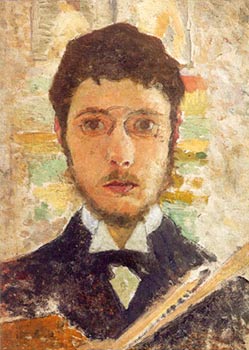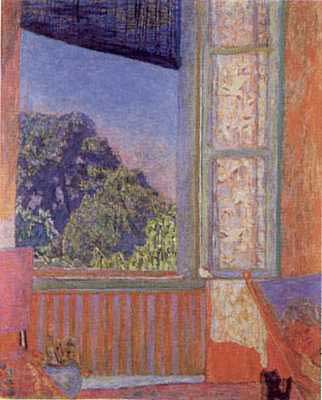
Eye Candy:
Pierre Bonnard at the Phillips Collection
In Washington D.C., a city of museums, the Phillips Collection stands out as a real treasure. Originally conceived of as a purveyor of continental modernism to American audiences, the Phillips has retained its focus even if the art trends it intended to showcase are now dormant. It has ceased being a gallery of contemporary art to become an historical museum. However, the Phillips continues to challenge its visitors rather than merely cycle through all the old favorites, primarily by reminding us what was so cutting edge about modernist art in the first place and thus making a convincing claim in favor of its value today. This was true with the Weston photography exhibit (see review), and it is true of the Phillips' new show, Pierre Bonnard Early and Late, which will be open until January.
The primary reason to go see the works of Pierre Bonnard is that they are a pleasure to look at. This is true for two reasons. The first is the intense, lustrous colors that make his canvases radiate light as if they were images on flat-panel plasma displays. They are brilliant, sunny, warm, and inviting. They draw in your eyes the way shimmering tropical beaches draw in swimmers. Bonnard makes you want to bathe in his pools of paint.
 The second reason to see Bonnard is the series of games he plays both with perspective and composition. He flattens out depth in such a way that the viewer looks back and forth from field to field trying to ascertain why exactly things look the way they do. The best examples are his interiors that feature large windows open to a pastoral landscape. Bonnard only implies the depth beyond the windows. At first glance one sees the correct perspective and thinks nothing more of it. However, a second look complicates matters. Something is not quite right. I found myself walking up close to each painting, gazing at it, and then walking across to the other side of the room and gazing at it again from a distance. I did this several times for each canvas. The reward for my effort was only uncertainty. Likewise the objects in Bonnard's paintings and the way he composes them rarely lend themselves to easy interpretation. They are full of puzzling details such as people and small dogs tucked into corners, some with gazes that lead to nowhere obvious and make little sense. What is that expression on her face? Why is she looking in that direction, and why is she there in the first place?
The second reason to see Bonnard is the series of games he plays both with perspective and composition. He flattens out depth in such a way that the viewer looks back and forth from field to field trying to ascertain why exactly things look the way they do. The best examples are his interiors that feature large windows open to a pastoral landscape. Bonnard only implies the depth beyond the windows. At first glance one sees the correct perspective and thinks nothing more of it. However, a second look complicates matters. Something is not quite right. I found myself walking up close to each painting, gazing at it, and then walking across to the other side of the room and gazing at it again from a distance. I did this several times for each canvas. The reward for my effort was only uncertainty. Likewise the objects in Bonnard's paintings and the way he composes them rarely lend themselves to easy interpretation. They are full of puzzling details such as people and small dogs tucked into corners, some with gazes that lead to nowhere obvious and make little sense. What is that expression on her face? Why is she looking in that direction, and why is she there in the first place?



film politics music jay's head poetry art josh ring fysche saddies about archive